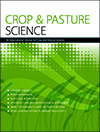The paper reports the outcomes of two on-farm experiments that aimed to identify the most cost-effective strategies to control herbicide-resistant annual ryegrass in rainfed, no-till, wheat-based farming systems in southern NSW. The studies linked efficacy of annual ryegrass control with the relative profitability of combinations of different crop sequences and agronomic management. The results showed that three consecutive years of >95% weed control by using diverse crops are required to cost-effectively reduce annual ryegrass seedbanks in soil to manageable levels.
CP22370 Abstract | CP22370 Full Text | CP22370PDF (2.5 MB) | CP22370Supplementary Material (440 KB) Open Access Article





